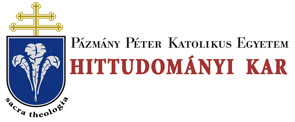Folia Theologica et Canonica, Supplementum (2016)
Szabolcs Anzelm Szijromi, O.Praem., Relationship among the Holy See, Czech-, Polish-and Hungarian Kingdoms in the 13"'-14" century
RELATIONSHIP AMONG THE HOLY SEE, CZECH-, POLISH- AND HUNGARIAN KINGDOMS 205 Between 1236 and 1246 had happened several connected military actions and temporary occupations of some territories in Europe by Mongolian military groups, under the leadership of Batu-Khan. The Council of Lyon I (1245) during its session II dedicated an independent canonical statement (Const. [4]) to the Mongolian invasion, under the title “De Tataris”. The council explained that this unmerciful nation had attacked several Christian nations, including Poland, Russia and Hungary; then it asked all of the Christian World to rise up against this brutal occupation and to impede this forging ahead by proper military act. The text emphasized that every Christian country’s support is needed to block this invasion.34 Unfortunately, this appeal had remained as ineffectual as the very similar earlier one by Pope Gregory IX on June 6lh 1241 and also on July P' 1241.35 Not only the Polish, but even the Hungarian tactical system and preparation were not ready against this nomadic form of invasion. This testified well that only the fortresses of Esztergom and Pannonhalma (St. Martin’s Hill) could be resistant against the Mongolian attack, moreover Székesfehérvár, because the marshland around that.36 Those several letters which were sent in this urgent and extraordinary dangerous situation by the rulers of the Eastern boarder of the Western Christianity in order to receive military protection and improvement from the rest of European kingdoms had arrived to the pope with delaying and with difficulty, nevertheless every Roman Pontiff was ready to call on the Christian countries for furtherance those countries which were under attack, but the political diversification impeded any possible help.37 It concluded into defeat at Muhi where the Hungarian leading wing of the army had perished on April 11"' 1241.3S During the strong winter the Mongolian forces could get across the Danube, therefore even Old-Buda had fallen under Mongolian instruction, however Adalbert IV was able to escape and finally arrived to Trau (Dalmatia), then returned to Hungary because the invasion had stopped and moved back, but several countries in the East - e.g., Bulgaria, Galicia, etc. - remained under control of the Mongolian “Golden Horde”. The fear therefore was constant from a new attack which was expected for 1285, however for that time the Eastern border of Europe had been prepared to block them.34 14 14 Cone. Lugdunense I (1245), II Const. [41 De Tataris, in Conciliorum oecumenicorum decreta, Bologna 1973.’ (COD) 297. 35 Theiner, A., Vetera Monumenta Historica Hungáriám Sacram illustrantia, I. Romae 1860. 183-185; cf. Fraknói, V., Magyarország egyházi és politikai összeköttetései a Római Szent- Székkel, I. 65. 36 Almási, T„ Tatárjárás, in Kristó, Gy. (ed.), Korai Magyar Történeti Lexikon (9-14. század), Budapest 1994. 664-665, especially 664. Pataky, V., Magyar történelem, Toronto 1983. 45-47. 37 Almási, T., Tatárjárás, 664. 38 Almási, T., Tatárjárás, 664. Almási, T„ Muhi csata, in Kristó, Gy. (ed.), Korai Magyar Történeti Lexikon (9-14. század), 469. 35 About the entire Mongolian invasion and its internal and external connections: GöCkenjan, H. - Sweeney, J. R. (Hrsg.), Der Mongolenstrum. Berichte von Augenzeugen und Zeitgenossen 1235-1250, Graz 1985.
